Southern Noir and “Rich Literary Soil”
The Big Thrill Interviews Author Bryan E. Robinson
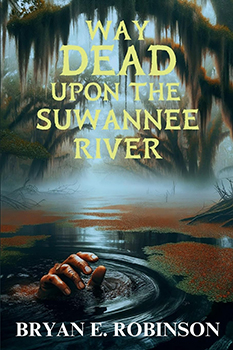 By day, Bryan E. Robinson is a mild-mannered psychotherapist and Professor Emeritus at the University of North Carolina at Charlotte. By night, he’s the author of this first novel, WAY DEAD UPON THE SUWANNEE RIVER. Or, as he likes to say, “I heal by day and kill by night.” He recently completed the second in the series, She’ll Be Killing ’Round the Mountain. Here, he tells us about himself, his process, and what makes him tick.
By day, Bryan E. Robinson is a mild-mannered psychotherapist and Professor Emeritus at the University of North Carolina at Charlotte. By night, he’s the author of this first novel, WAY DEAD UPON THE SUWANNEE RIVER. Or, as he likes to say, “I heal by day and kill by night.” He recently completed the second in the series, She’ll Be Killing ’Round the Mountain. Here, he tells us about himself, his process, and what makes him tick.
Where did you grow up? Tell us about your family and what kind of kid you were.
I was born and grew up in rural North Carolina within spitting distance of the Copperhead-infested banks of the Catawba River, an ugly, fast-moving, muddy river where the Catawba Indians once lived on the water’s red-clay edge. Our small, red dirt-road community was called Catawba Heights—a smattering of modest working-class homes with more vagabond kudzu than people and small houses with postage-stamp yards, rusted newspaper boxes, and yappy unvaccinated dogs running loose in the neighborhood.
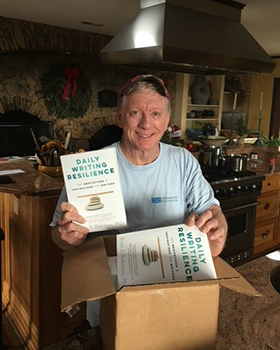
I grew up in a household with two sisters—one older and one younger. Predeceased by an older brother, I was conceived into what many would call a haunted womb—when the surviving child is expected to fulfill the hopes and dreams of the sibling that predeceased him. Somehow, I got the message I was the chosen one to save the reputation of a dysfunctional household—overachieving and creating a veneer that projected the image of a normal family, which we clearly were not. Southern mystery writer John Hart said, “Family dysfunction makes for rich literary soil. It’s a place to cultivate secrets and misdeeds where betrayal cuts deeply, pain lingers, and memory becomes timeless.”
When did you get hit by the writing bug?
From the time I could hold a pencil, I had ink in my blood. I escaped my parent’s fights and alcoholism through writing. I wrote mysteries about other eight-year-olds my age getting into trouble, and I snatched them out of it. Little did I know the boyhood stories were my mind’s way to prevent me from drowning in a sea of chaos while also providing an escape from the uncertainties of a scary, unpredictable childhood. To this day, writing—both fiction and nonfiction—continues to be my best friend—providing me calm, clarity, predictability, security, and fun.
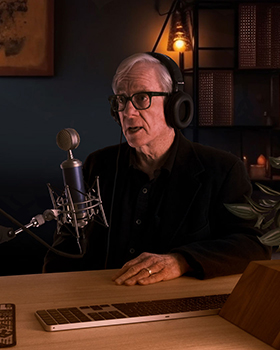
Which writers inspired and influenced you?
I loved reading Southern novels. Southern traditions—the savory food, cloaked messages full of contradictions, dysfunctional relationships, and deep pockets of religious fundamentalism—exemplify the beauty/brutality paradox. Classic Southern Fiction—from Tennessee Williams to Flannery O’Connor to Pat Conroy—have excavated these fundamentalist religious traditions, teasing to the surface the underlying dysfunction one suspicion, one misunderstanding, one murder at a time.
As a boy, I read Mark Twain’s Tom Sawyer and Huckleberry Finn. As I got older, I read Harper Lee’s To Kill a Mockingbird and anything Pat Conroy wrote, especially Prince of Tides.
This book is filled with quirky characters. Are they based on people you knew growing up or completely invented?
This quote by the late Steve Jobs says all that needs to be said about the significance of quirky characters in a novel: “Here’s to the crazy ones, the misfits, the rebels, the troublemakers, the round pegs in the square holes . . . the ones who see things differently—they’re not fond of rules. You can quote them, disagree with them, glorify or vilify them, but the only thing you can’t do is ignore them.”
I like quirky characters because they’re more interesting than the average person. Some of the Women’s Preservation Club members are fashioned after the quirky southern women I grew up with. Gigi, with the missing index finger, for example, was real, someone I knew when I lived on the Suwannee River. Big Jake and Johnny Devillers are composites of the redneck guys I grew up with that bullied other kids.
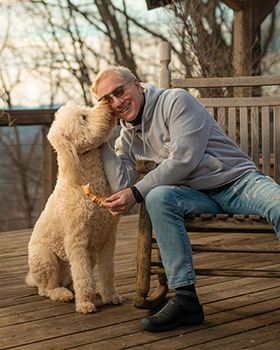
I’ve always had compassion for the misfits, the underdogs or people unjustly ridiculed or abused, as was Voodoo Sally. My house burned down when I was five. That scene takes place in the novel with Brad. What’s different is our black housekeeper, Pauline, was cooking with my mother when the kitchen oil stove blew up, and Pauline was blamed for the fire.
Where does Brad Pope end and you begin?
There are aspects of me in Brad Pope. He’s a psychotherapist as I am and a workaholic as I was. But he’s much better looking, quick-witted, and smarter than I am. Maybe he’s the ideal me. I believe writers tap into an unconscious pool without knowing it, and our characters are aspects deep inside of us and around us. After the novel came out, I got a call from a man named Brad Pope, who lives on the Swananooa River in Black Mountain. He calls his grandmother Gigi and has a stepbrother just like Brad Pope. The details went on and on. He asked me how I knew so much about his life.
How did you come up with the idea for the Women’s Preservation Club?
The WPC are women, scorned by the Whitecross way of life and Big Jake in one way or another, trying to preserve the earth and a dying, natural way of life—threatened by murder, selfishness, and real estate developers. In a way, the story reflects the disempowered women I knew who lived under the thumb of abusive white men.
The WPC are survivors of the southern brutality, imbued with the ability to protect themselves against the sexist and discriminating police department and win out over the authority of antagonists Johnny Devillers and Big Jake Nunn. On the surface, the WPC appear to be cold-blooded murderers, and the townsfolk label them as a wicked coven, when, in fact, they are the preservers of the town’s life. The women in my life were not powerful, but as a writer, it was delicious to bestow the WPC with the power of a united group (watchdogs standing for the preservation of life’s beauty, unlike the Ku Klux Klan that has always stood for brutality).
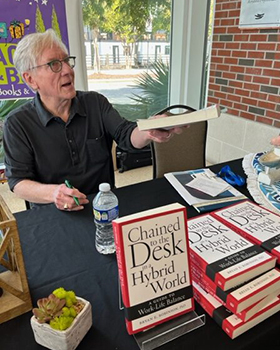
The part of the country in which your book is set is very much a character. Why do you think it’s important, and could this story have taken place anywhere else?
I used to have a house on the Suwannee River near Gainesville, FL. Divers come from all over the world to dive the underwater caverns and springs beneath the Suwannee River. It is a culture all unto itself, and there’s nothing like it anywhere on the planet. The deep, winding underwater caves are a metaphor for the deep diving into the minds of his clients that Pope does, where he sometimes gets lost instead of diving into his own—which he finally does. When I lived there, at night, the river dwellers sat around blazing campfires on the sandy shores, recounting stories of inexperienced cave divers going on solo dives, losing their direction and getting lost, drowning in the twisted, turning underwater caves. Tales of corpses wrapped in tangled guidelines, entombed like mummies, arms tightly pinned against their stiff bodies. Stories of bodies so bloated that rescue teams had to pry them out of narrow passageways. And of goodbye messages hastily carved in limestone walls during final dying breaths.
The Big Thrill Interviews Author Bryan E. Robinson
- Bryan E. Robinson - May 23, 2024
- Tom Baragwanath - February 22, 2024
